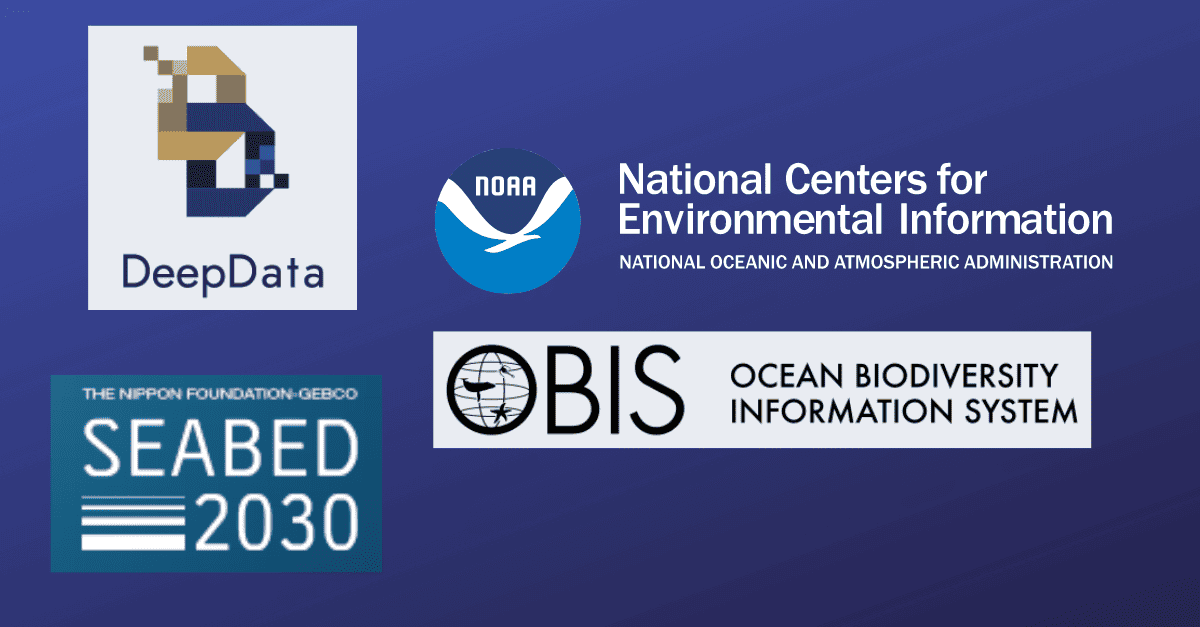Do we know enough about the deep ocean for the regulators (ISA, SBMA, BOEM, etc.) to make informed decisions?
Worldwide Ocean Data
Globally, several programs are bringing together data to give us a better understanding of our oceans. This important scientific work has been conducted over the last 50 years, with an acceleration in the last 10 years.
- Seabed 2030 aims to map the entire ocean floor by 2030
- The World Ocean Database hosts the world’s largest database of data about the ocean water column (temperature, salinity, oxygen, nutrients, etc., by location & depth)
- 15.7 million oceanographic casts made up of 2.56 billion individual profile measurements as of the last major release in 2018
- The Ocean Biodiversity System hosts open-access data on marine biodiversity, connecting 500 institutions from 56 countries.
- Over 125 million observations of 183,515 species as of the date of writing (February 2024)
The understanding of our oceans has also been accelerated by the 2021-2030 UN Decade of Ocean Science for Sustainable Development, which supports a vast array of ocean science.
Areas of Interest for Seabed Mining
The exploratory phase in the marine minerals sector covers a lot of ground, literally. When exploration starts, organizations are granted a large area (typically 75,000 km2 in international waters), where they have to characterize the mineral resource and the environment. Exploration begins with collecting broad data over a large area that can answer two key questions:
- Where are the best mineral resources within the exploration area?
- What is the natural environment, and are there environmentally sensitive areas (to avoid)?
This data is used to narrow down the area of interest over time, eventually to the specific area proposed for mining.
Exploration activities have generated an immense amount of data from environmental baseline studies. The ISA Deep Seabed and Ocean Database (DeepData launched in 2019) combines all of the baseline environmental data from 31 contractors with exploration activities in international waters. The data has been supplied by, on average, 3.5 contractor cruises per year from 2012. Each cruise averages a cost of around $10M USD. As of July 2023, DeepData contains:
- Over 10 terabytes of data, cited by more than 160 scientific publications.
- Over 142,000 submissions per year since 2012
- Over 158,000 ecology data records
- Over 273,000 geotechnical parameter records
- Over 289,000 taxonomy data records
- Over 3 million water properties records
- 5.8 million conductivity, temperature and depth sensor readings
In 2022, a linkage was created between DeepData and the Ocean Biodiversity System, contributing 89,000 species observations, 15% of the observations collected below 3000 meters (ISA, 2023). Search DeepData via: https://data.isa.org.jm/
Exploitation (Mining) Permit Applications
Once the area of interest for mining is identified, even more detailed work begins. A main piece of work required for a mining application is the results of the Environmental Impact Assessment (EIA), which answers three key questions:
- What is the environment like right now, and what would it be like moving forward if mining didn’t happen (over the lifespan of proposed mining activities)?
- What are the potential impacts of the proposed mining activities? (natural, social, and economic environment)
- How will you prevent or minimize negative impacts and maximize positive impacts?
Answering these questions takes a lot of time and effort. Applicants must meet requirements and satisfy regulators that the baseline environment and potential impacts are well understood, including:
- At least one full calendar year of baseline environmental data characterizing biodiversity and the ecosystem, the physical and chemical characteristics of the water and sediment, and the interactions between them.
- Potential social and economic impacts (positive and negative)
- Testing mining equipment to measure impacts; collected data is used to build the models that predict impacts over the lifespan of mining operations
- Consultation with a wide variety of stakeholders at key milestones and documentation to show how their input was considered.
Many contractors with exploration permits under the ISA have been carrying out exploration activities for decades, accumulating an impressive amount of data and a detailed understanding of their exploration area, far beyond what we know about other areas of the deep ocean. As an example, bacteria in the seabed where mining is being considered is studied and documented. All of this data is then uploaded to DeepData.
Monitoring Data
Part of the exploitation (mining) permit application describes how the environment will be monitored for impacts and how monitoring results will be reported. This means that monitoring activities are ongoing throughout the lifespan of mining operations, and this performance is regularly reported (typically annually), further contributing to the body of data for the area.
So, Do We Know Enough?
If we randomly select an area of the deep ocean—no, we probably don’t know enough to allow mining there. However, the comprehensive EIA studies within a specific area for planned mining operations give us a detailed understanding of the environment, which enables us to predict impacts and subsequently allow regulators to decide whether or not to issue exploitation permits.
